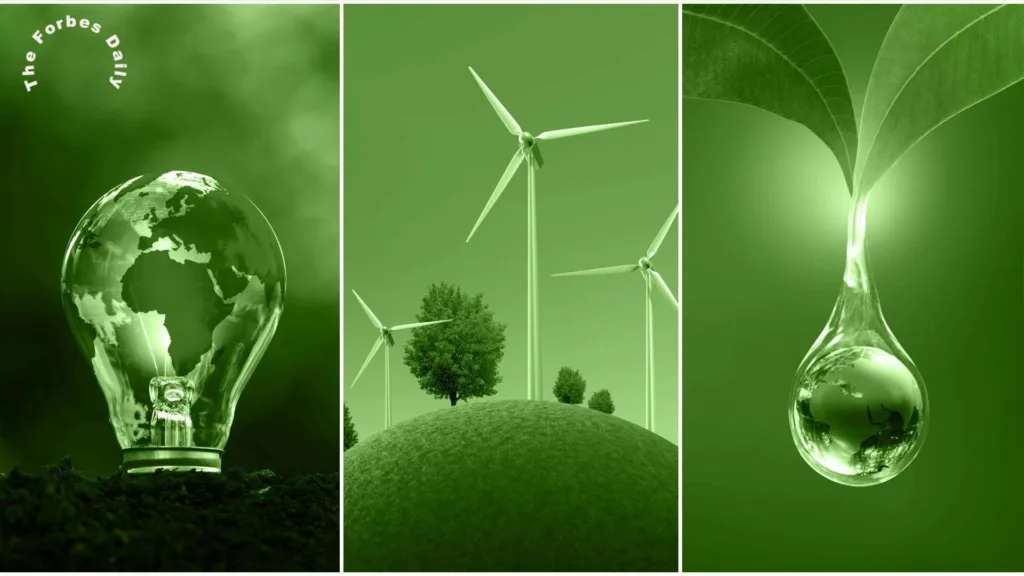In an generation the place our planet faces ever-increasing environmental challenges, the magnitude of transitioning from non-renewable power sources to renewable strength can’t be overstated.

The world of renewable energy, exploring its a variety of forms, advantages, and the pivotal function it performs in mitigating the damaging consequences of non-renewable strength sources like fossil fuels.
Understanding Renewable Energy
Renewable energy, additionally recognized as smooth energy, is derived from herbal assets that are always replenished, making them sustainable and environmentally friendly. Unlike non-renewable electricity sources, such as coal, oil, and herbal gas, which dissipate over time, renewable electricity sources proceed to exist as lengthy as the Earth does.
Renewable Energy Examples
Solar Energy
One of the most extensively diagnosed types of renewable strength is photo voltaic power. Solar panels harness power from the sun’s rays, changing it into electricity. This technological know-how has won titanic reputation due to its accessibility and versatility, making it a high instance of renewable strength technology.
Wind Energy
Wind generators generate electrical energy by using harnessing the kinetic strength of the wind. Wind farms are now a frequent sight in many regions, supplying a large element of their strength needs.
Hydropower
Hydropower, additionally acknowledged as hydroelectric power, generates electricity by using using the gravitational pressure of flowing or falling water. It is a reliable and relatively environment friendly supply of renewable energy, with large-scale hydroelectric dams providing electrical energy to whole regions.
Biomass Energy
Biomass power is derived from natural substances such as wood, crop residues, and even municipal stable waste. By changing these substances into biofuels or burning them directly, we can produce warmth and electrical energy whilst decreasing waste.
Advantages of Renewable Energy
The blessings of renewable strength are manifold and prolong some distance past the discount of carbon emissions
Environmentally Friendly
Renewable power sources produce little to no greenhouse fuel emissions, which is critical for combating local weather trade and lowering air pollution.
Abundant and Sustainable
Renewable assets like sunlight, wind, and water are really inexhaustible, making sure a long-term and sustainable power supply.
Job Creation
The renewable electricity quarter has tested to be a good sized supply of job opportunities, fostering monetary boom and stability.

Energy Independence
Reducing dependence on non-renewable power sources enhances electricity safety and reduces vulnerability to rate fluctuations in international power markets.
Technological Innovation
Investing in renewable power science drives innovation and advances in smooth power systems, benefiting a variety of industries.
Renewable Energy and Non-Renewable Energy
The coexistence of renewable and non-renewable power sources in our strength combine highlights the significance of transitioning to cleaner options. While non-renewable electricity sources have powered our world for centuries, they come with extreme environmental consequences, inclusive of air and water pollution, habitat destruction, and the launch of greenhouse gases.
To guard the planet and our future, it is vital to prioritize renewable strength sources, regularly phasing out non-renewable alternatives.
Importance of Renewable Energy
The value of renewable power can’t be overstated
Climate Change Mitigation
Reducing carbon emissions via switching to renewable electricity is crucial for limiting international warming and stopping catastrophic local weather events.
Environmental Preservation
Utilizing renewable strength sources helps guard ecosystems, natural world habitats, and the ordinary fitness of our planet.
Energy Access
Renewable electricity can supply easy and low-priced electricity to far off or underserved regions, enhancing the fantastic of lifestyles for thousands and thousands of people.

Energy Security
Diversifying our strength sources with renewables reduces our reliance on unstable fossil gas markets, improving power security.
Non-Renewable Resources
Non-renewable resources, inclusive of coal, oil, and herbal gas, are finite and have a damaging affect on the environment. The depletion of these assets and their function in local weather trade make transitioning to renewable electricity sources imperative.
FAQS about Renewable Energy
What are the 7 main sources of renewable energy?
The 7 most important sources of renewable electricity are:
- Solar Energy
- Wind Energy
- Hydropower (Hydroelectric Power)
- Biomass Energy
- Geothermal Energy
- Tidal Energy
- Ocean Thermal Energy
What are the 5 main types of renewable energy?
The five predominant sorts of renewable electricity are:
- Solar Energy
- Wind Energy
- Hydropower (Hydroelectric Power)
- Biomass Energy
- Geothermal Energy
Which is an example of renewable energy?
An instance of renewable power is Solar Energy, which is harnessed the use of photo voltaic panels to seize the sun’s rays and convert them into electrical energy or heat.
What is the importance of renewable energy?
The significance of renewable strength lies in its capacity to:
- Mitigate local weather exchange via lowering greenhouse gasoline emissions.
- Decrease dependence on finite and polluting fossil fuels.
- Improve strength protection via diversifying power sources.
- Promote financial boom and job advent in the renewable power sector.
- Enhance environmental sustainability by using lowering air pollution and habitat destruction.
What are the advantages and disadvantages of renewable energy sources?
Advantages and Disadvantages of Renewable Energy Sources:
Advantages
- Low or zero greenhouse fuel emissions.
- Abundant and sustainable resources.
- Job introduction and financial benefits.
- Energy independence and security.
- Technological innovation and advancement.
Disadvantages:
- Intermittency and variability (e.g., wind and photo voltaic power).
- High upfront expenses for infrastructure.
- Impact on ecosystems (e.g., hydropower dams).
- Land and aid use (e.g., biomass energy).
- Limited scalability in some instances (e.g., geothermal energy).
What are 5 benefits of renewable energy?
Five advantages of renewable strength include
Environmental Sustainability: Renewable electricity sources produce minimal air and water air pollution and have a decrease environmental have an impact on in contrast to non-renewable sources.
Climate Change Mitigation: Using renewable electricity reduces greenhouse fuel emissions, assisting to fight international warming and its related effects.
Energy Security: Diversifying electricity sources with renewables reduces dependence on risky fossil gas markets, bettering strength security.
Job Creation: The renewable electricity area has confirmed to be a tremendous supply of employment opportunities, fostering monetary growth.
Technological Innovation: Investment in renewable strength technological know-how drives innovation, main to developments in easy electricity structures and benefiting quite a number industries.
Conclusion
In our quest for sustainable and environmentally accountable power solutions, renewable strength stands out as the beacon of hope. By embracing renewable electricity technological know-how and recognizing the benefits of renewable energy, we can pass closer to a future the place non-renewable electricity sources are consigned to history. Solar energy, wind power, and different renewable assets provide a cleaner, greener, and greater impenetrable power landscape, making sure a brighter future for generations to come.
Outstanding feature
Your content always manages to captivate and educate me. Keep up the fantastic work!
Your blog has become a part of my daily routine Your words have a way of brightening up my day and lifting my spirits